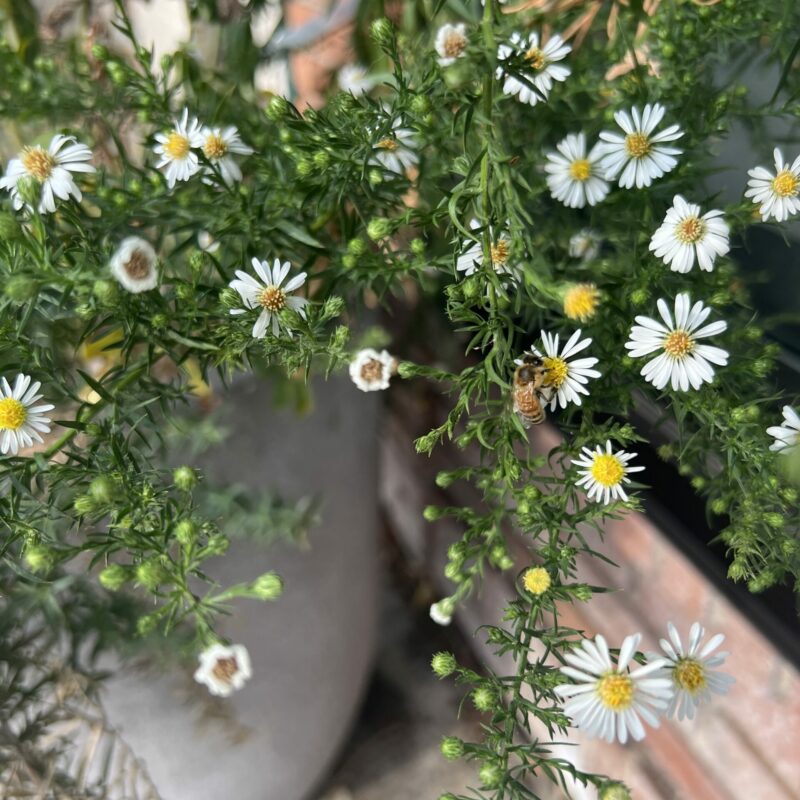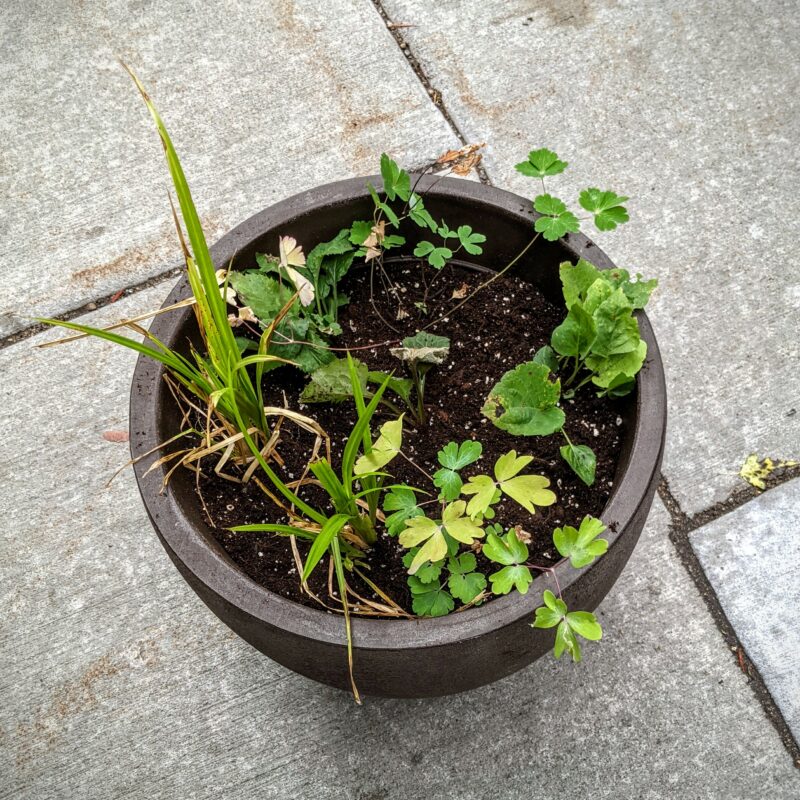If you don’t have outdoor space for a garden, you can still help pollinators by planting native plants in pots on your balcony or porch. Native container plantings can thrive for years with proper care. For more information on native plants and other projects, check out the Resilient Yards Online Learning Series.
Container Plantings
Click on a tab below to learn more!
Select your container and plants
- Choose your containers: Containers with drainage holes in the bottom made of plastic, metal or composite are best for Minnesota winters. Look for lightweight planters. Some containers/pots are even designed to self-water. Bigger and deeper pots lead to stronger plants in the long run.
- Select 4-6 native plant species to include, depending on the size of your container. Choose a mix of plants that bloom throughout the growing season—spring, summer, and fall. The rusty patched bumble bee and many other pollinators need blooming flowers from April to October.
- Note whether the location of your container planting receives mostly shade or sun. This will influence what plants you include. Check out the Design Templates tab on our Resources page for lists of plants that do well in sunny and shady container plantings.
Prepare your container
The spring or fall are good times to start a container garden. Planting in fall means that plants will put their energy into their roots and come back healthy in the spring. When you’re ready to plant, take these steps:
- Cover the drain holes of your container with a filter fabric. You can use a scrap of old t-shirt or a piece of woven/mesh fabric.
- Add mulch or small rock to the bottom couple inches of your container to fill space and create air pockets for root growth. This will help with drainage and make the container lighter.
- Add potting soil to provide nutrients for your new plants. A good potting mix will drain well and not dry out too fast. Go for an organic potting soil, or you can improve your potting soil by adding compost. You can use a natural mulch, such as leaf litter, to protect plant roots.
- Move soil aside to create a hole the size of the plant pot. Take the plant out of its small store pot and loosen the roots. Then place the new plant in the hole so the to pof the base of the plant is in line with the new soil level.
Maintaining your container planting
Keep these tips in mind to keep your container planting healthy throughout the year:
- Prune your plants: Some native plants, like coneflowers, require a trim occasionally. Snip the stem at the first set of leaves, and prune any dead stems to keep your container looking healthy and fuller and to encourage new growth.
- Add nutrients: As your plants grow and mature, they use up the nutrients in the soil in your container. While our Minnesota native plants don’t need a lot, you can add a bit of plant food once or twice a year. This could be a bit of compost or natural liquid fertilizer from the store.
- Prepare for winter: Use a container made of plastic, metal, or composite materials. Before the first freeze, let the planter dry out to avoid cracking. Leave your container out in the winter and your native perennial plants will come back in the spring!
For more year-round maintenance information, check out the Resilient Yards Online Learning Series.


